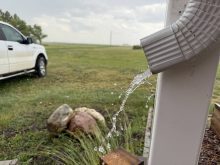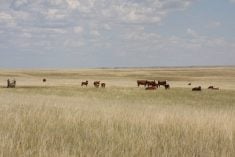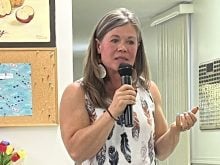The irrigation season is over but challenges on southern Alberta’s rivers and reservoirs remain as levels at the Oldman Dam reservoir continue to drop, St. Mary reservoir is empty and water shortage advisories spread.
Seven water shortage advisories were issued yesterday afternoon around Medicine Hat following a month of deteriorating conditions along the South Saskatchewan River and its tributaries.
Those advisories come on top of six water shortage advisories in the Oldman River basin: five each on the Bow and Red Deer river basins and one in the Milk River basin.
Read Also

Huge Black Sea flax crop to provide stiff competition
Russia and Kazakhstan harvested huge flax crops and will be providing stiff competition in China and the EU.
The Alberta government-controlled and operated St. Mary and Oldman Dam reservoirs pose a potentially bigger long-term risk in the region to irrigators and municipalities in addition to possible short-term impacts. Those reservoirs will require to be refilled before next spring to ensure water to irrigators.
The St. Mary Reservoir is virtually empty after dropping to two percent of capacity earlier this month.
But it’s the levels at the Oldman Dam reservoir that are potentially the greatest threat to the river levels if precipitation isn’t received in the region.
Capacity has fallen just below 30 percent and is losing 10 million cubic metres a week as it maintains stream flows at around 23 cubic metres a second into the Oldman River, which provides municipal water supplies to Lethbridge, Taber and several other communities.
The Alberta government hasn’t provided an official to answer questions about the situation but said in a statement it continues to work with stakeholders.
“We recognize the importance of every drop of water, particularly during a hot, dry summer and fall. The current situation is concerning. Water levels are low in many parts of the province, but a healthy winter snowpack would go a long way towards alleviating these issues next spring,” read a statement from Alberta Environment.
The province moved into Stage 4 of its drought water management plan in August, the second highest level in the five-stage plan and one short of an emergency declaration.
Dave Westwood, general manager of the St. Mary River Irrigation District (SMRID), said it’s not just the district’s namesake reservoir that is being stressed.
“We’re down to 25 percent of storage within the entire system, which includes all of our reservoirs and the Alberta Agriculture and Irrigation head works reservoirs which includes St. Mary, which is the biggest one, and Ridge, Jensen and Waterton,” said Westwood.
“So, we’re watching very closely now that we’ve concluded irrigation season, we’re watching really closely to see if we get some fall precipitation events.”
SMRID shut its system down on Sept. 22 — at least two weeks early — and had been running at a reduced capacity leading up to that point.
The Eastern Irrigation District shut down its canals Sept. 25 while the Bow River Irrigation District will be stopping delivery of water Oct. 2.
The Lethbridge Northern Irrigation District, which draws water from the Oldman Dam and Keho reservoirs, will be closing Oct. 6, according to its latest bulletin Sept. 28.
Contact alex.mccuaig@producer.com


















